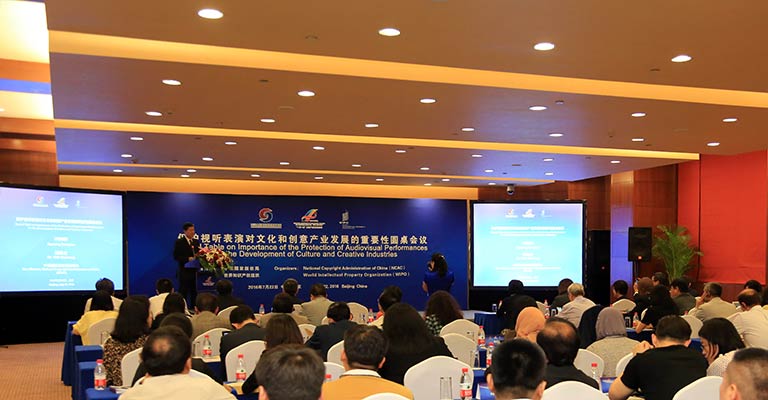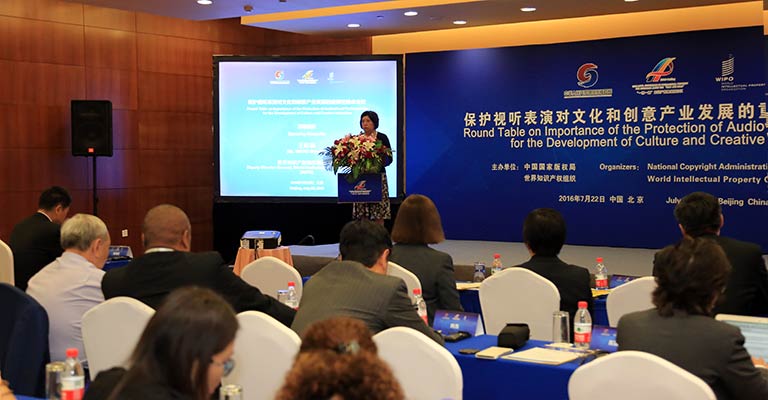Roundtable Underlines Importance of Quick Entry into Force of Beijing Treaty
July 27, 2016
Quick entry into force of the Beijing Treaty on Audiovisual Performances should be a priority for the international community according to participants at a roundtable on the importance of the protection of audiovisual performances for the development of culture and creative industries held on July 22, 2016 in Beijing.
The event was organized within the framework of the High Level Conference on Intellectual Property for Countries Along the “Belt and Road”, which took place on July 21-22, 2016.
Some 100 Conference participants from 20 countries as well as a number of other experts from around the world attended the roundtable.

Homecoming
The event was opened by Vice Minister Yan Xiaohong of China’s National Copyright Administration (NCAC) who recalled the success of the 2012 diplomatic conference that was held in the Chinese capital and led to the adoption of the Beijing Treaty on Audiovisual Performances – so-named in recognition of the city that hosted the final round of negotiations.
Mr. Yan underlined that the international copyright system was further strengthened and improved with the conclusion of the Beijing Treaty, which benefits both performers and the entire creative industries sector. He expressed hope that the treaty would enter into force quickly.
Copyright for audio-visual performers
Opening the meeting on behalf of the Director General of WIPO, Deputy Director General Binying Wang recalled that the Beijing Treaty brings audiovisual performers into the fold of the international copyright framework in a comprehensive way, for the first time.

Ms. Wang recalled that 12 countries have already joined the Beijing Treaty, out of the 30 required for entry into force. She welcomed efforts by a number of countries that WIPO knows are actively working to complete national procedures required to formally join the treaty.
Booming audio-visual industries
In China, the film and TV industry have become an important component of the creative industries, said Mr. Tang Zhaozhi, Deputy Director General, Copyright Department of China’s NCAC. He underlined that audiovisual works are spreading faster and wider than ever with the rise of mobile technology. This, he noted, has resulted in many challenges considering the ease of reproduction. In view of this, Mr. Tang said ensuring the protection of audiovisual rights as covered by the Beijing Treaty is a common obligation and objective for the international community. He also outlined the challenges facing China in the audiovisual sector.
Speaking on Mongolia’s national experience, Mr. Namjil Chinbat, Director General of Mongolia’s Intellectual Property Office, said Mongolia has a thriving film sector today backed by a supportive national legislative environment and stressed the importance of international protection in today’s globalized world.
Mr. Rory Wayne Voller, Acting Commissioner, Companies and Intellectual Property Commission (CIPC) of South Africa, said the Beijing Treaty must be complemented by the national obligations of countries.